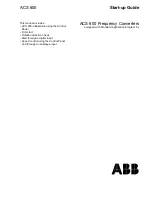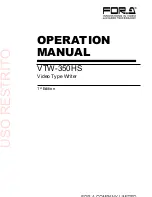
UMAX140900. Ethernet to CAN Converter. Version 5
Page: 28-35
8
TECHNICAL SPECIFICATIONS
8.1 Power Supply
8.1.1 Input
Power supply input is located on the Ethernet connector. The power supply uses automotive
battery power. It is not compatible with the PoE (Power over Ethernet) IEEE 802.3 standard.
Table 5. Power Supply Input
Parameter
Value
Remarks
Supply Voltage
9…36 VDC
12V, 24V
– nominal
Power Consumption
2W
Maximum at 12V
Protection
Under Voltage Shutdown
Over Voltage Shutdown
Reverse Polarity
Transients
< 6 V
> 37V
12V Load Dump
8.1.2 Output
Power supply output is located on the CAN connector.
Table 6. Power Supply Output
Parameter
Value
Remarks
Voltage Output
9…36 VDC
Pass-through power from the power supply input.
Current Output
0.7A
Maximum pass-through current.
Voltage Drop
1V
Maximum
Protection
Overcurrent
Short to Battery
Short to Ground
> 1A
8.2 Ethernet
Table 7. Ethernet Parameters
Parameter
Value
Remarks
Number of Ports
1
Port Type
10BASE-T, 100BASE-TX
Auto-configuration and full-duplex supported.
MDIX
Auto-MDIX
Auto-crossover to eliminate cabling mismatch.
LED Indicators
Speed/Activity
Protocols
Ethernet IEEE 802.3, IP,
ICMP, ARP, UDP, TCP,
HTTP, Proprietary
CAN messages are transmitted using a
proprietary application protocol running on top of
the user selectable UDP or TCP transport
protocol.
The internal web server uses HTTP protocol.
The unit supports a proprietary discovery
protocol.
Server Mode
Up to 10 bi-directional
simultaneous connections
Up to 9 connections, if the Client mode is
enabled.
Client Mode
1 remote bi-directional
connection
Auto-connect to a remote server, if connection is
dropped or temporary unavailable. Client mode
can be disabled.
Web server
Provided
Always enabled for converter configuration and
diagnostics.









































